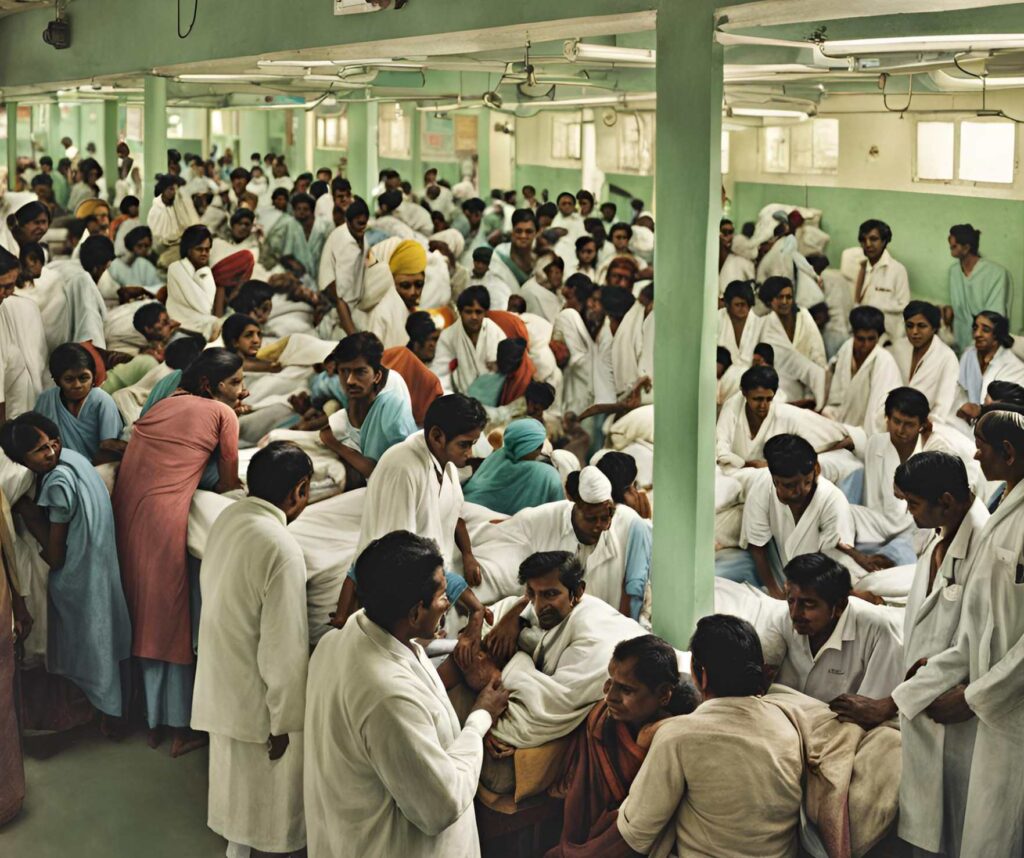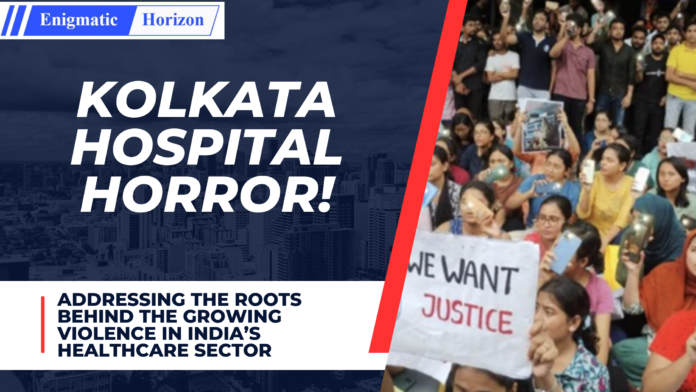In India, we often see healthcare workers as the lifeline of the medical system; as people who are tirelessly dedicated to caring for patients in their most vulnerable moments. However, the recent, heart-wrenching tragedy at RG Kar Medical College in Kolkata, where a young trainee doctor was brutally raped and murdered, has shaken the medical community as well as the public. This horrifying event has ignited widespread protests, with doctors across the nation starting to demand better protection.
The Rising Tide of Violence
As we all know, hospitals are supposed to be places of healing and hope, but for many healthcare workers, they have increasingly become battlegrounds. Violence against medical professionals has escalated alarmingly in recent years. While the reasons behind this violence are complex—ranging from overcrowded hospitals and long wait times to the general stress and anxiety of patients and their families— we can see that its impact on the lives of healthcare workers are painfully clear.
The brutal murder of the young doctor in Kolkata is an extreme, yet not isolated, example of the dangers healthcare workers have been facing. This incident has sent shockwaves through the medical community, and as we can see, it has led to strikes and protests as many doctors are refusing to return to work until justice is served and their safety is assured. This growing fear among healthcare workers is really saddening despite their roles as healers and caregivers, and yes, it does highlight a disturbing problem which has been existing for a long time.

Yes, it is also true that there are cases of violence where it is driven by genuine grievances related to medical negligence. Over the years, we have seen several occasions and incidents where patients have suffered or died due to negligence, and it is this that has fuelled anger and mistrust towards the healthcare professionals. These outcomes are tragic but at the same time, not representative of the entire medical community, and yet unfortunately this has contributed to the rising tensions between patients and healthcare providers.
The Role of Technology in Preventing Violence
In the face of these challenges, can technology play a critical role in preventing violence and improving the overall safety of healthcare environments? Let us look at some ways technology might help:
Enhanced and Better Surveillance Systems
- CCTV Cameras: Proper quality CCTV cameras can be installed in hospitals as it can help in identifying potential perpetrators. It can provide crucial evidence as well in cases of violence. It can help to monitor key areas such as emergency rooms, corridors, and entrances, so that even a minor incident is quickly identified and addressed. The presence of cameras can also add a sense accountability among both staff and visitors, helping both parties, and eventually reducing the need for violence.
- Panic Buttons: Panic buttons can also be placed strategically throughout hospital premises as it can enable healthcare workers to quickly alert security personnel in case of an emergency. Having this kind of a swift response capability can prevent violent situations from spiralling out of control, and ensuring that medical professionals feel safer in their work environment.
2. Mobile Safety Applications
- Safety Apps for Healthcare Workers: Mobile applications can be designed for healthcare workers to offer them an additional layer of security. These apps can provide instant alerts to security teams, GPS tracking, and emergency contact features, ensuring that help is just a tap away in any threatening situation.
- Telemedicine and Virtual Consultations: In high-risk areas, reducing the physical presence of doctors through telemedicine can be a preventive measure. Virtual consultations can help in limiting direct contact. Thus, this can also reduce the potential for violent encounters, especially in volatile environments.

Addressing Negligence and Building Trust
Yes, technology can prove to be a boon and can definitely enhance safety, but it is not a cure-all solution, as it doesn’t address the root of the problem. There needs to be a genuine effort to improve medical training, ensure accountability, and foster a culture of compassion and communication between healthcare workers and patients.
One thing that must be improved upon at the earliest is proper patient care, so that there is no negligence, and a trust is built in the healthcare system. Regular audits, continuous professional development, and patient feedback mechanisms can help ensure that the standards of care are upheld. If a patient feels that their concern is being heard and addressed, we can safely say that the possibility and likeliness of violence is reduced by at least 50 percent!
Conclusion
So far arrests have been made in this Kolkata case, and it is important that justice is delivered at the earliest! At the same time, this case serves as a powerful reminder of the vulnerabilities that healthcare workers face. By using technology effectively and addressing the underlying problems in our healthcare system, we can work on creating a better, healthier and safer environment for both patients and doctors. The time to act is now, if we truly want safety for all, it is important that we work on restoring this trust in the medical community.

